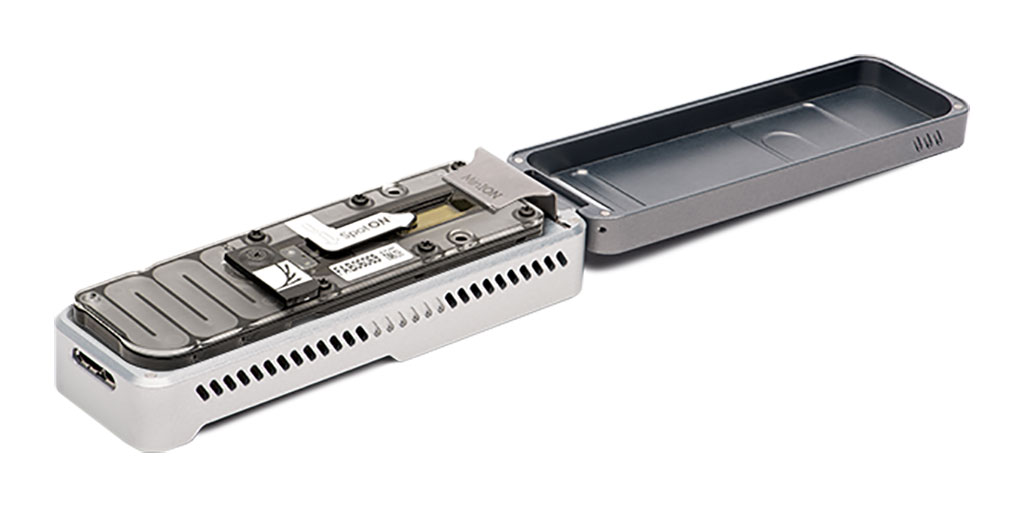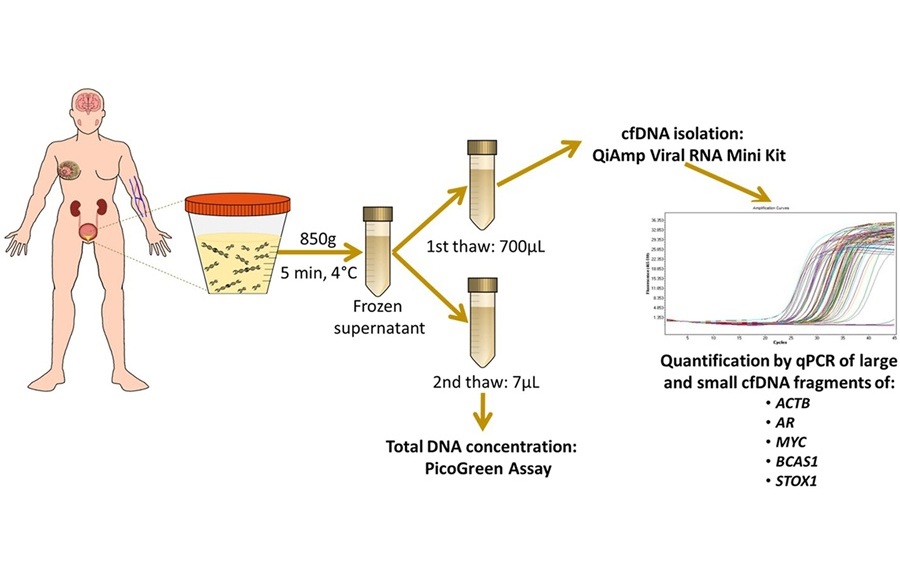A Liquid Biopsy for Diagnosis of Pediatric High-Grade Glioma
By LabMedica International staff writers
Posted on 04 Nov 2020
A liquid biopsy approach that detects cell-free tumor DNA (cf-tDNA) in samples of cerebrospinal fluid has been used to diagnose pediatric high-grade glioma (pHGG), a rare but usually fatal childhood brain cancer.Posted on 04 Nov 2020
Tumors release cell-free tumor DNA (cf-tDNA) into cerebrospinal fluid (CSF), allowing for potential detection of tumor-associated mutations by CSF sampling. Up to now, liquid biopsy has been particularly challenging for brain tumors because mutant DNA is shed into body fluids at much lower levels than any other types of tumors.

Image: MinION flow cell for DNA analysis (Photo courtesy of Oxford Nanopore Technologies Ltd.)
Investigators at the University of Michigan (Ann Arbor, USA) hypothesized that direct, electronic analysis of cf-tDNA with a handheld analytical platform - the Oxford Nanopore Technologies (Oxford, United Kingdom) MinION - could quantify patient-specific CSF cf-tDNA variant allele fraction (VAF) with improved speed and limit of detection compared with established methods.
Nanopore sequencing is a unique, scalable technology that enables direct, real-time analysis of DNA or RNA fragments. It works by monitoring changes to an electrical current as nucleic acids are passed through a protein nanopore. The resulting signal is decoded to provide the specific DNA or RNA sequence. Using nanopore sequencing, a single molecule of DNA or RNA can be sequenced without the need for PCR amplification or chemical labeling of the sample.
To prove their hypothesis, the investigators performed ultra-short fragment (100–200 base pair) PCR amplification of cf-tDNA for clinically actionable alterations in CSF and tumor samples from 12 patients with pHGG alongside six CSF samples from nontumor control patients. PCR products underwent rapid amplicon-based sequencing on the Oxford Nanopore MinION instrument with quantification of VAF. Additional comparisons to next-generation sequencing (NGS) and droplet digital PCR (ddPCR) were performed.
Results revealed that the Nanopore instrument, which requires significantly smaller amounts of spinal fluid than other sequencing methods, demonstrated 85% sensitivity and 100% specificity in CSF samples (n = 127 replicates) with 0.1 femtomole DNA limit of detection and 12-hour results, all of which compared favorably with NGS. Serial CSF cf-tDNA sequencing by Nanopore demonstrated correlation of radiological response on a clinical trial, with one patient showing dramatic multi-gene molecular response that predicted long-term clinical response.
The results obtained by this study confirmed that Nanopore sequencing of ultra-short pHGG CSF cf-tDNA fragments was feasible, efficient, and sensitive with low-input samples thus overcoming many of the barriers restricting wider use of CSF cf-tDNA diagnosis and monitoring.
"We knew from past research that the genetic sequences of these tumors, including information about the mutations that are driving them, can be found in the spinal fluid - but collecting it is not currently part of the standard of care," said senior author Dr. Carl Koschmann, a pediatric oncologist at the University of Michigan. "That is something we have been hoping to change."
"As caregivers, we are excited about the possibility of monitoring tumors without exposing patients to potential complications from invasive surgeries," said Dr. Koschmann. "This approach suggests we can rapidly and reliably detect key tumor-driving mutations in high-grade gliomas with very small samples - overcoming some of the barriers that were preventing the use of spinal cord fluid in diagnosing and monitoring these patients. And we are optimistic about incorporating this approach into clinical trial design for pediatric brain cancer, allowing us to track molecular response across multiple genes to better understand and predict clinical outcomes."
The study was published in the October 21, 2020, online edition of the journal Clinical Cancer Research.
Related Links:
University of Michigan
Oxford Nanopore Technologies














